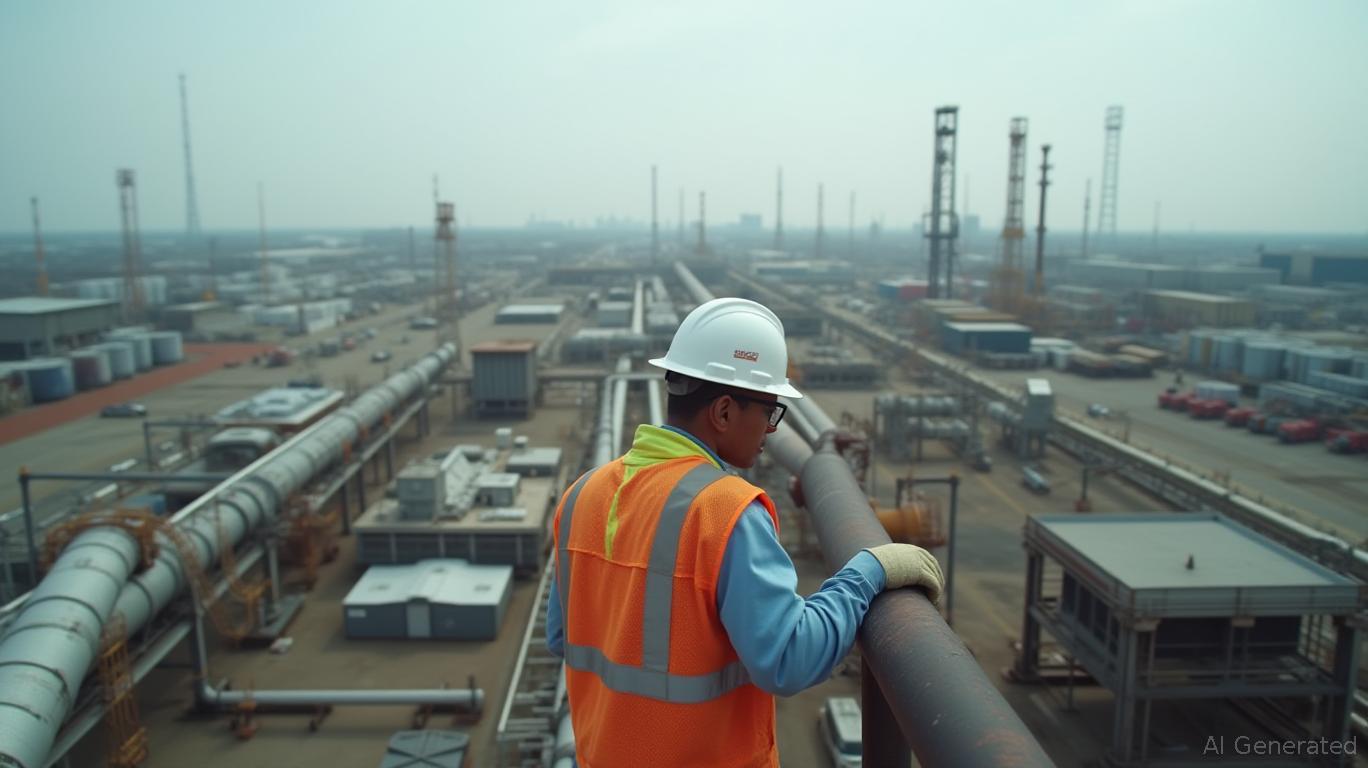Gibson Energy: Navigating Near-Term Headwinds in a Growth-Driven Sector
Gibson Energy (GBNXF), a midstream energy infrastructure leader, faces scrutiny after
downgraded its rating to "Underweight" from "Neutral," citing structural challenges in its core markets. Yet beneath the near-term turbulence lies a company positioned to benefit from long-term trends in energy logistics and infrastructure demand. Investors must weigh the risks against Gibson's strategic assets and financial resilience to determine whether its valuation and dividend sustainability hold merit.The Near-Term Risks: A Perfect Storm?
JPMorgan's downgrade hinges on three key issues: tighter crack spreads, steep backwardation in Canadian heavy oil, and waning volatility-based opportunities. Crack spreads—the margin between crude oil input costs and refined product outputs—are narrowing due to oversupply in refined products, squeezing refining margins. Meanwhile, the steep backwardation (where near-term prices exceed future prices) for Canadian heavy oil has increased operational complexity for midstream firms like Gibson, which rely on volume-based fees.
The Texas Gulf Coast crude export facility acquisition and leadership change under CEO Curtis Philippon aim to reposition the company, but JPMorgan argues these moves may not offset stagnation. "Gibson risks being left behind as peers capitalize on stronger fundamentals," analysts noted.
Long-Term Catalysts: Infrastructure Demand and ESG Evolution
While the near-term outlook is clouded, Gibson's core business—storage, optimization, processing, and waterborne logistics—remains critical to North America's energy transition. The U.S.-Canada energy corridor requires robust infrastructure to handle growing crude exports and refined product flows, a trend bolstered by the "Build Canada Now" initiative, which prioritizes energy infrastructure spending.
Gibson's credit profile also supports its ability to weather volatility. Despite the downgrade, its credit ratings have improved to A2 (Moody's equivalent), with default probabilities below 0.5% since late 2024. This stability underpins dividend sustainability, currently yielding 4.2%, well-supported by its debt-to-EBITDA ratio of 2.1x—a conservative metric for the sector.

Dividend Sustainability: A Balancing Act
Gibson's dividend has been a cornerstone of its investor appeal. While JPMorgan's concerns about profitability pressure are valid, the company's dividend coverage ratio (EBITDA-to-dividend payout) remains healthy at 2.8x, indicating ample room for payouts even if margins compress. However, management must prioritize capital allocation to avoid overextending debt.
The ESG frontier adds both risk and opportunity. As regulators push for greener energy systems, Gibson's ability to adapt—such as expanding into renewable fuels or carbon capture logistics—could unlock new revenue streams. Its recent partnerships with Alberta's carbon capture projects signal a proactive stance, but execution will determine long-term success.
Investment Takeaways: A Tale of Two Timelines
- Near-Term (12–18 months): Investors should remain cautious. The downgrade reflects real challenges: Gibson's share price has underperformed peers by 15% year-to-date, and further margin pressure could test liquidity. Avoid aggressive positions unless you can tolerate volatility.
- Long-Term (3–5 years): Gibson's asset base and credit strength position it to capitalize on infrastructure growth. The $500B+ U.S.-Canada energy infrastructure pipeline through 2030 creates tailwinds for firms with scale. Dividend seekers with a long horizon may find value here, particularly if shares dip further on short-term sentiment.
Final Analysis: Hold for the Long Game
Gibson Energy is a company caught between short-term headwinds and long-term potential. While JPMorgan's concerns are justified, its infrastructure dominance and improving credit metrics suggest resilience. For investors, the key question is timing: the near-term risks may offer a buying opportunity at lower valuations, but those focused on the next 3–5 years could view current prices as attractive. The dividend, though not immune to margin pressures, remains sustainable barring a severe earnings collapse.
In a sector where infrastructure is king, Gibson's strategic assets and balance sheet give it a fighting chance to outlast the current storm—and thrive when the winds shift.
Disclosure: This article is for informational purposes only. Always conduct your own research or consult a financial advisor before making investment decisions.

Comments
No comments yet